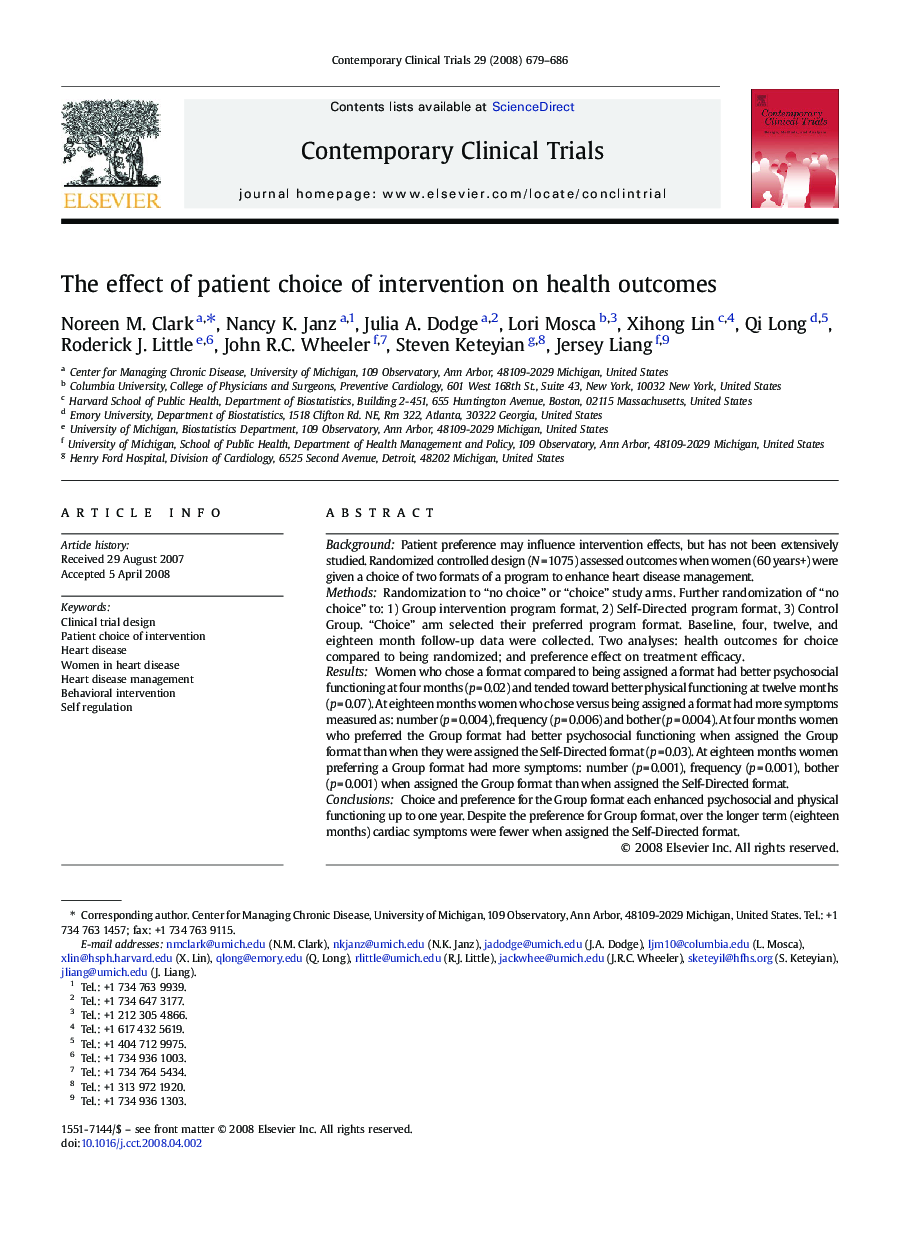| Article ID | Journal | Published Year | Pages | File Type |
|---|---|---|---|---|
| 6151502 | Contemporary Clinical Trials | 2008 | 8 Pages |
Background:Patient preference may influence intervention effects, but has not been extensively studied. Randomized controlled design (N = 1075) assessed outcomes when women (60 years+) were given a choice of two formats of a program to enhance heart disease management.Methods:Randomization to “no choice” or “choice” study arms. Further randomization of “no choice” to: 1) Group intervention program format, 2) Self-Directed program format, 3) Control Group. “Choice” arm selected their preferred program format. Baseline, four, twelve, and eighteen month follow-up data were collected. Two analyses: health outcomes for choice compared to being randomized; and preference effect on treatment efficacy.Results:Women who chose a format compared to being assigned a format had better psychosocial functioning at four months (p = 0.02) and tended toward better physical functioning at twelve months (p = 0.07). At eighteen months women who chose versus being assigned a format had more symptoms measured as: number (p = 0.004), frequency (p = 0.006) and bother (p = 0.004). At four months women who preferred the Group format had better psychosocial functioning when assigned the Group format than when they were assigned the Self-Directed format (p = 0.03). At eighteen months women preferring a Group format had more symptoms: number (p = 0.001), frequency (p = 0.001), bother (p = 0.001) when assigned the Group format than when assigned the Self-Directed format.Conclusions:Choice and preference for the Group format each enhanced psychosocial and physical functioning up to one year. Despite the preference for Group format, over the longer term (eighteen months) cardiac symptoms were fewer when assigned the Self-Directed format.
